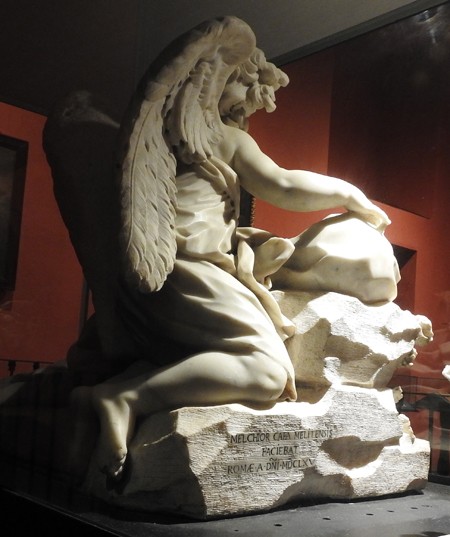The princess hearing of her mother’s statue, which is in the keeping of Paulina,—a piece many years in doing and now newly performed by that rare Italian master, Julio Romano, who, had he himself eternity and could put breath into his work, would beguile Nature of her custom, so perfectly he is her ape: he so near to Hermione hath done Hermione, that they say one would speak to her and stand in hope of answer.
With these words William Shakespeare describes in The Winter’s Tale the astonishingly lifelike marble portrait of Hermione, queen of Sicilia. Being unfairly accused of adultery, the queen faints during the humiliating trial before her husband, King Leontes, and is thought to be dead. As we discover at the end of the play, Hermione lives on in her memorial sculpture, miraculously realized by the Italian master Giulio Romano (c. 1499–1546). Shakespeare here responds to the topos of sculpture as lacking only a voice to be a living presence. I argue that it is through poetry that early modern sculpture finds its voice and changes its meaning.
The two-year A. W. Mellon Postdoctoral Fellowship at CASVA allowed me to work on two projects, the first described in Center 36 and the second a book entitled “A Poetic Urgency: Sculpture and Poetry in Dialogue in the Early Modern World.” My purpose is to emphasize the osmotic interchange between sculpture and poetry in sixteenth-century Mediterranean Europe and beyond. I argue that the frequent association of sculpture with poetry reveals patrons’ intention to provide silent statues with a literary voice and that the aesthetic experience of urban monuments as well as sculptures in private contexts was significantly shaped by the coexistence of poetry. This project thus investigates the ways in which these two arts read, cite, and translate each other.
My aim is to rediscover the evidence of what I call an “urgent need” for a poetic voice in early modern sculpture over a wide chronological and geographical range. This project begins in 1493, the year in which humanist Ambrogio Leone wrote to Jacopo Sannazaro, asking him to participate in the collection of poems he was putting together, called Beatricium. The peculiarity of this anthology, which was never published, is that it was motivated by a statue of Beatrice specifically commissioned for the purpose of inspiring poetry. As I discuss in a chapter of a forthcoming book, the Beatricium constitutes a unique example of a collection of poems dedicated to
The
art and nature:
Finally, this project will explore the relationship between sculpture, poetry, and urban identity, encompassing diverse regions and cultural traditions throughout Europe and the Americas. The heroic poem Vida de Santa Rosa de Santa María, natural de Lima, y
